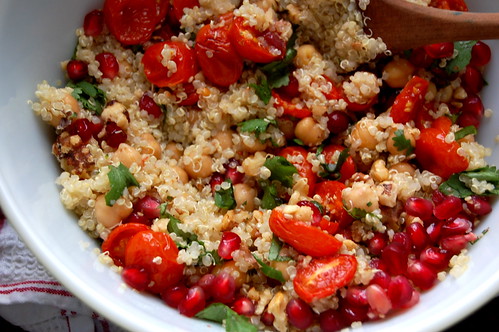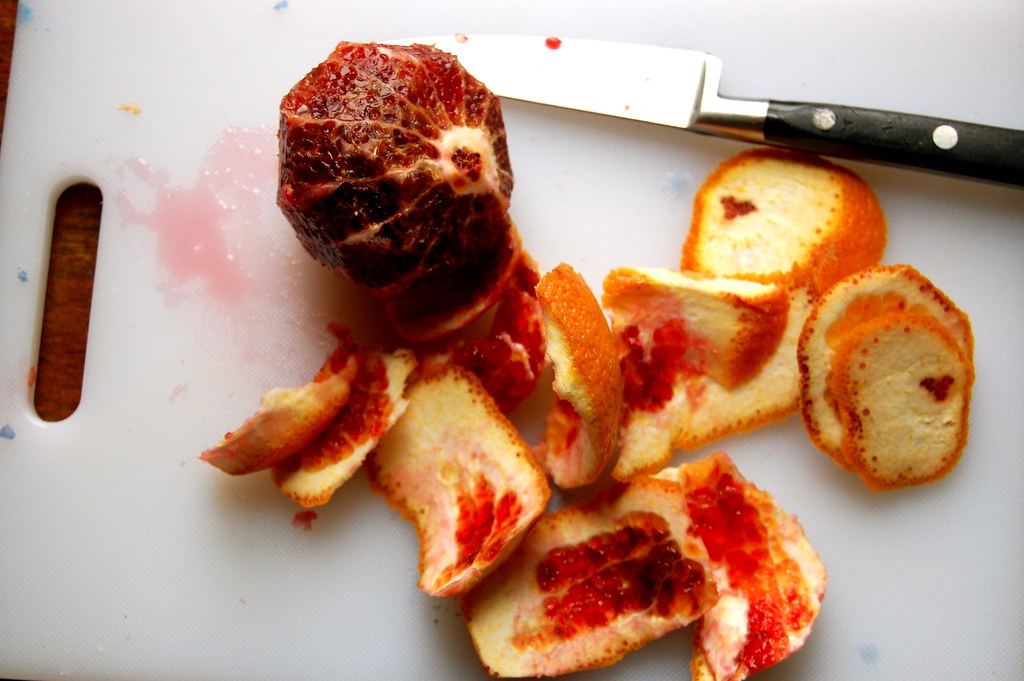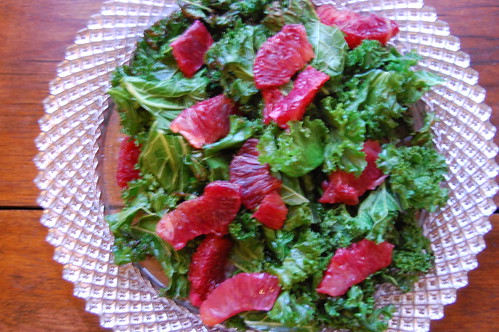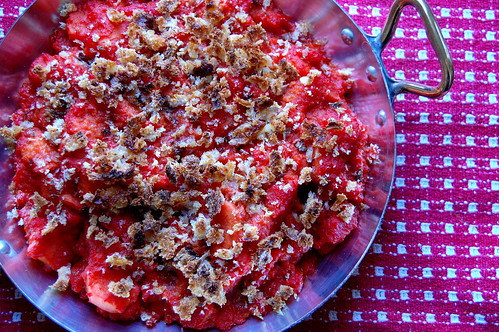
I've been planning for the last month or so to host a vegetable-centric dinner party, but it seems I keep getting way-laid. There was a work-trip and then dealing with my mother's estate affairs, and there is nothing like a mountain of paperwork and taxes to make you order a pizza.
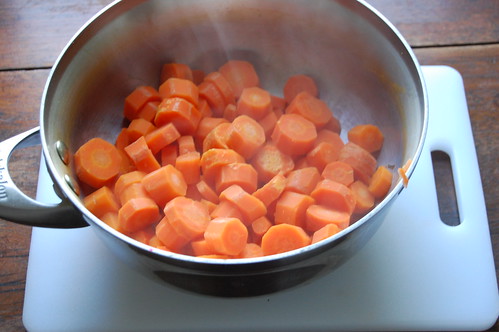 But I like the idea of a vegetable-centric party, especially for February when all those resolutions seem to melt away into a box of Valentine chocolates. A vegetable-centric party, not to be confused a vegetarian party, but merely something where all the dishes have vegetables as their primary ingredient. This is as opposed to many vegetarian dishes which are loads of pasta, bread, and cream.
But I like the idea of a vegetable-centric party, especially for February when all those resolutions seem to melt away into a box of Valentine chocolates. A vegetable-centric party, not to be confused a vegetarian party, but merely something where all the dishes have vegetables as their primary ingredient. This is as opposed to many vegetarian dishes which are loads of pasta, bread, and cream.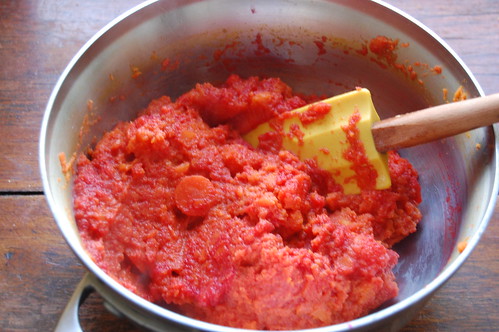 For such a party I might serve delicate vegetable-filled wontons, a Lebanese stew of eggplant, tomato, and chickpeas, a salad of bitter escarole, or a garlicy potato mash. Or I might serve this beet-carrot gratin, which I made on a whim one afternoon. Most gratins are very thin slice of vegetables layered with butter and cream, but this one is a more rustic rough mash of things.
For such a party I might serve delicate vegetable-filled wontons, a Lebanese stew of eggplant, tomato, and chickpeas, a salad of bitter escarole, or a garlicy potato mash. Or I might serve this beet-carrot gratin, which I made on a whim one afternoon. Most gratins are very thin slice of vegetables layered with butter and cream, but this one is a more rustic rough mash of things. Just like the bright magenta color, this dish is warm and softly comforting. It's good for these last days of winter, when it's still cold and dreary and you're just itching to switch your blacks and browns for a warmer magenta hue.
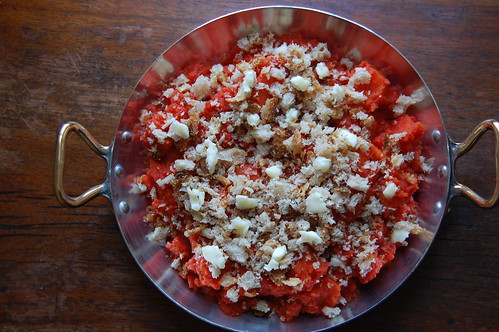 Beet and Carrot Gratin
Beet and Carrot Gratin1 lb carrots, peeled
2-3 tablespoons olive oil
2 large or 3 medium beets
2 tablespoons butter
1/4 teaspoon ground cumin
1/2 teaspoon salt
1/4 cup grated pecorino romano cheese
1/2 cup fresh breadcrumbs
1 tablespoon butter
1. Preheat oven to 400 F. Place olive oil and carrots in a casserole-type dish and roll the carrots around to coat. Place a lid on the dish or cover tightly with foil. Bake for 30 minutes, shaking the pan occasionally for even cooking.
2. Meanwhile, wrap the beets in foil and place in the oven to roast for 1 hour, or until tender. When done, turn the oven down to 350 F.
3. When the beets are cool enough to handle, peel them and roughly dice them. Place the beets in a food processor and pulse to a rough puree. Add the carrots and the 2 tbl butter and pulse until roughly chopped and combined (don't over do it, you don't want a puree). Stir in the cumin, salt, and cheese, and place in a baking dish.
4. Scatter the breadcrumbs over top and dot with slivers of the remaining tablespoon of butter. Place in the oven for 15 minutes, or until warmed through and the breadcrumbs are browned.



